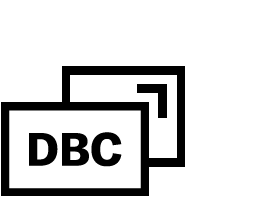Rebranding in the Health Food Industry: Key takeaways
Imagine a classic Cheerios box, and you’ll see a yellow box with the name printed in bold serif text and a lifelike picture of the cereal in a heart-shaped bowl. The health brand, which has been around for nearly 60 years, achieved its success with a logo that has withstood time.
Cheerios’ unchanged packaging is an outlier in today’s health food industry, which revolves around change. Many health food companies are rebranding. Recent examples include Sabra, Quest, and Nomi.
Sabra
Sabra is the ubiquitous brand of chickpea spread with yellow and red packaging. The company dominates more than half of the hummus market, raking in around $800 million in sales each year.
The Changes:
The Sabra logo—previously designed in slanted, hard-to-read text—is now much simpler. The new font style resembles a combination of Arial and Century Gothic.
The chickpea image above the logo looks similar, only now it’s the shape of a heart instead of a circle.
The label, which normally covers the top half of the container, was restructured from a horizontal orientation to a vertical layout. The new version fits less text in each line, and draws the reader’s eye down, making it easier to read.
Another change is the packaging’s artwork. The original label contains a drawing of chickpeas and leaves, while the new one has a professional photograph of chickpeas.
The Results:
The Sabra label received uplifted visuals and text, but stayed on-brand by sticking to its iconic yellow and red color scheme. the simple logo and the vertically placed label are much easier to read. The new packaging conveys the product’s fresh ingredients through its life-like photography, which helps the customer emotionally connect with the brand. overall, the brand took some aesthetic leaps without sacrificing its identity or its mission.
Quest
These dessert-like protein bars are popular with celebrities and fitness bloggers, who frequently endorse the them on Instagram. Quest bar's packaging is known for its white italic font, colorful imagery and transparent nutrition facts.
The Changes:
The new Quest design features a bold black logo, fewer nutrition statistics, a monochromatic background and more blank space. The packaging images, formerly cartoon-like drawings of ingredients, are now photographs of real-life foods that encompass the flavor of each bar.
The new design is very recent, and is only currently available on Quest’s Maple Waffle bar and its Coffee Latte protein powder. You will see the new packaging gradually appear on the rest of Quest products in the future.
The Results:
Though the original label was pretty to look at, it was much too busy and ornate and lacked focus. The new design is cleaner and easier to read, and the bold logo matches two of the brand’s core values: strength and power. The new photography—which includes realistic pictures of cookies, S’more’s and chocolate bars—provides a sensory experience. It allows the customer to imagine the how each flavor will taste.
nomi
You might have heard of the “Fresh Bar,” the former name for this refrigerated fruit and oatmeal bar. Five Friends Food, the Minnesota-based company that makes the bar, just renamed the product to Nomi and totally revamped its packaging.
The Changes:
From the outside, the Nomi bar looks like a completely different product than the Fresh Bar. While the Fresh Bar logo was in all caps and had a curved structure, the Nomi logo features all lowercase letters in a straight alignment.
The old package was white with a clear opening and colorful banners, while the new one is much less structured. The new labels don’t contain any concrete lines or banners. Each flavor has its own aesthetic story within one color family. There is also a clear circular opening which resembles a sun that’s surrounded by landscapes like grass or mountains.
The Results:
The new design provides the customer with a personal experience unique to the brand. The story of a fresh product made with natural ingredients is evoked to the consumer through subtle, yet innovative visuals. The previously boring and rigid design is much more colorful and more pleasing to look at.
Conclusion:
Today’s health food companies are rebranding their images in a successful way. They are placing emphasis on customer experience by taking the customer through a visual brand journey. Small changes in label and banner orientation, text alignment, and real-life visuals are helping communicate the products in a cleaner, more effective way. Health food products now feature bolder, yet more minimal fonts than past designs and the packaging tells stories that consumers can easily connect to.
Are you looking to revamp your health food brand? Contact us to chat about how your product can start jumping off shelves.






